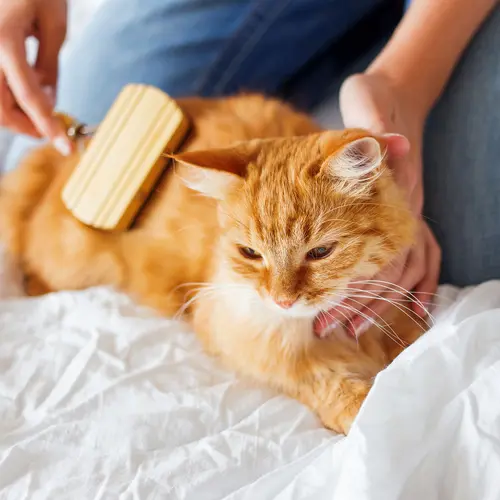There’s nothing quite like opening your windows on a warm summer’s day. But the desire to enjoy the weather can lead to putting your pets at risk, especially if you have feline friends. If you have unscreened windows and live above the ground floor, opening them could put your cat at risk of “high-rise syndrome,” or falling out of the window and getting hurt.
Many people assume that because cats can survive falls from high places, they will always walk away unharmed from a fall. This isn’t the case. While cats have a unique ability to often land on their feet, they are still at risk of serious injuries from falls, which may include:
- Shattered jaws
- Broken teeth
- Broken limbs
- Punctured lungs
Cats can and do die from falls, as well.
How serious is high-rise syndrome in cats? Very. During the summer months, ASPCA veterinarians see up to five cats a week who have fallen from a high place and hurt themselves. Simply opening a window can and does lead to many pet injuries every year. Here’s a breakdown of some high-rise syndrome facts and how to avoid it.
Fast Facts: Feline High-Rise Syndrome
It’s easy to assume that because cats love high places and seek them out regularly that they are safe and sound wherever they climb. Unfortunately, this isn't the case. While cats can generally hold onto tree branches and wooden surfaces with their sharp claws, other surfaces such as concrete or plastic are more challenging. Declawed cats are at even greater risk for the same reason.
Another common misconception is that falling from a lower height isn’t dangerous to your pet. However, a fall from a one- or two-story window can actually put your cat in more danger than a higher fall. It takes a little time for your cat to twist themselves around to land on their feet; short falls may not give them enough to do this, leading to injuries.
Luckily for pet owners, cats are unlikely to ever jump from a high window unless they trust that they will land safely. Cats have excellent survival instincts, after all. This means that many cases of high-rise syndrome happen when a cat falls accidentally from a high window or fire escape.
While cats have excellent survival instincts, they also have a tendency to hyperfocus on anything that interests them. A bird or bug flying around just beyond their reach can distract them enough that a loud noise or strong breeze startles them and causes them to fall.
When a cat falls, they flip over to land on their feet, and in the process they splay their legs slightly. This helps to better absorb the impact of the fall, but it can also lead to head and pelvis injuries if they fall far enough.
If your cat falls on concrete, they may lose consciousness. Don’t assume that they haven’t survived; instead, immediately bring them to an emergency animal hospital to get them the help they need.
Finally, cats can and are often injured in falls from high places, but not permanently. If a cat receives immediate, appropriate medical attention, most cases of high-rise syndrome have a 90% chance of survival.
High-Rise Syndrome Is Preventable
Below are some facts on high-rise syndrome. Although this type of injury is common, with just a few simple precautions you can prevent it entirely.
If you want to have your windows open, always install sturdy, snug screens. These will keep your cat from falling in the first place. If you don’t have screens on your windows, keep them closed.
Adjustable screens should be tightly attached to the windows so that they aren't knocked over, whether by curious pets or a strong breeze.
Childproof window guards are not an adequate replacement for screens. Though they provide gaps too small for children, cats can squeeze through just fine.
High-rise syndrome can only occur if your cat can access spaces where they can fall a significant distance, like open windows or fire escapes. To fully protect your pet, always keep your cats indoors. This has the added benefit of protecting them from cars, other animals, disease, and themselves. If you would like to give your cat the outdoor experience, you can purchase predesigned full-screen enclosures for backyards, terraces, and windows.


